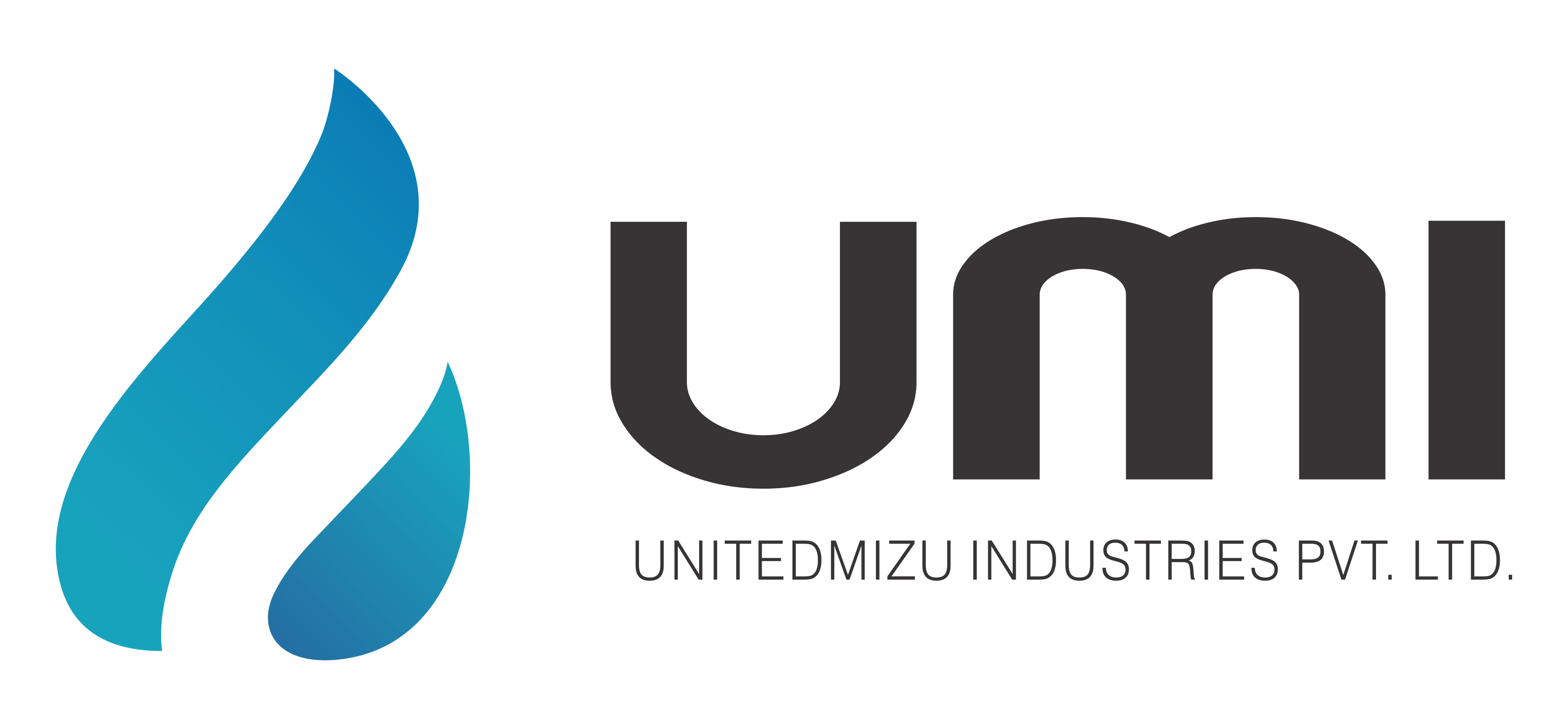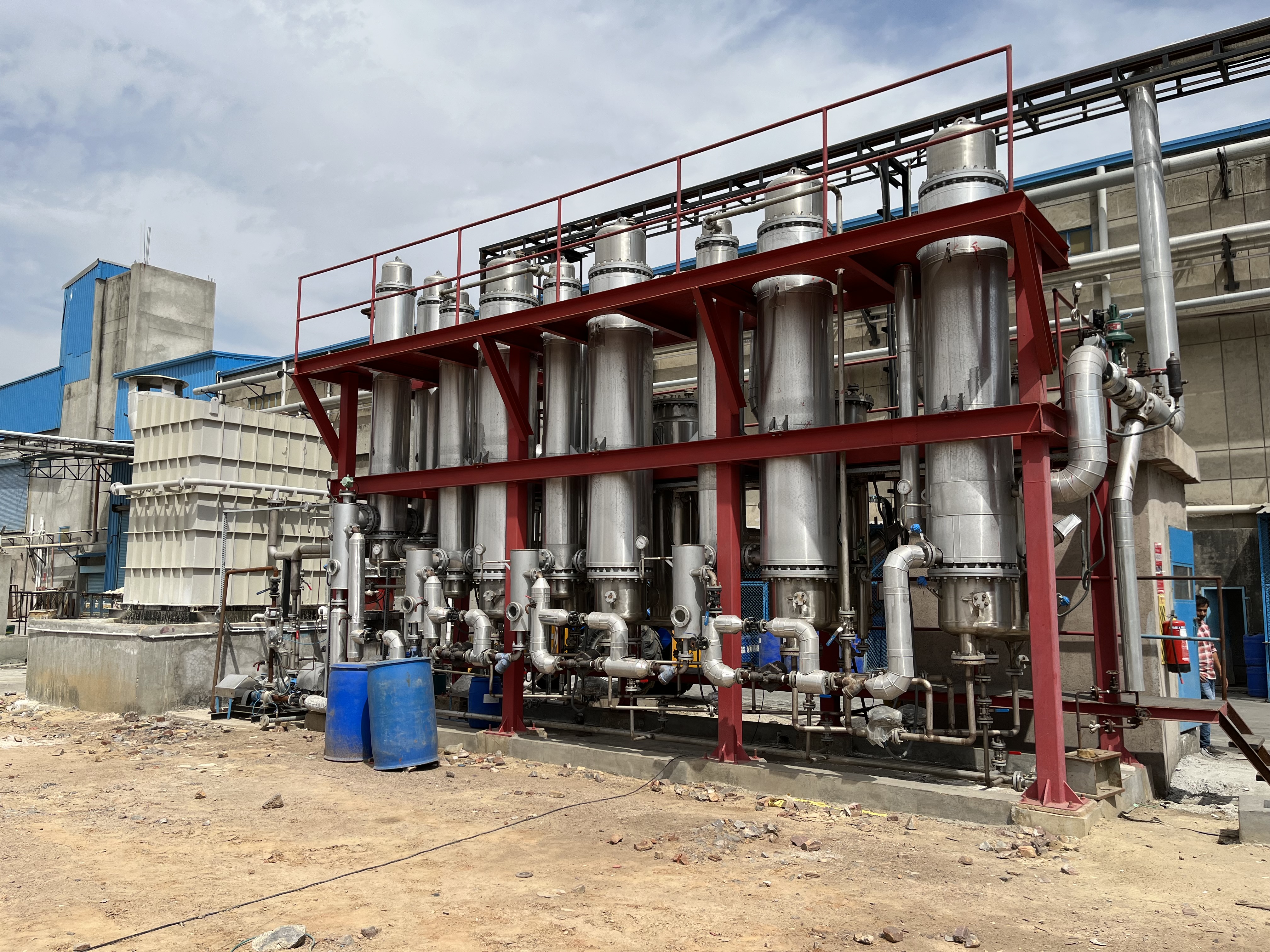CRP
A Caustic Recovery Plant is typically a multiple effect evaporation plant which will re-concentrate the weak lye by heating it in heat exchanger and when it reaches evaporator, vapor is released due to water evaporation that increases its concentration. This process is repeats itself by circulation in caustic recovery plant till the desired concentration is reached. Textile Mills involved in mercerizing of (Yarn, Woven, Knitted, Denim) cotton use caustic (NaOH) in mercerizing machines. After process in mercerizing machine this dilute caustic soda solutions come out from mercerizing machines as drain. The density of drain dilute caustic solution varies from 3% to 8% (31 to 87 gm/lit). The drained weak lye also causes financial loss not only by removal but also by process incurred to remove it, i.e. expense incurred in treating (neutralizing) at ETP as per pollution laws.
Mercerization is a finishing process in the textile industry where the textile fibers are treated under tensile stress with caustic soda. Large quantities of diluted caustic soda (weak lye) are a waste product of this process. UMI Caustic Recovery Plants (CRP) can turn a very large proportion of this weak lye into reusable concentrated caustic soda (strong lye).
Sustainability and quick return on investment
Sustainability has become an important goal, particularly for many companies in the textile industry. UMI technology allows textile companies to introduce sustainability into the mercerisation process. Due to the recovery process, the plant operator doesn’t have to bother disposing of the weak lye. The environment benefits directly. The CRP can show a return on investment within 6 to 8 months. As a result, plant operators can permanently cut the overheads incurred from mercerisation. When designing the plant, UMI already include the savings potential in the calculation.ADVANTAGES
• Payback-time is less than one year..!
• sustainability in the mercerization process
• Caustic Recovery possible in Gray fabric mercerization
• No alkaline waste water from mercerizing machine
• Generation of hot water from the waste energy
• Generation of soft water, the vapor condensate is slightly alkaline
• Recovery of surplus lye for wet-on-wet mercerizing
• No contamination of the heating steam
• Environmental protection: less chemicals for neutralization are needed
• Financial savings in neutralizing agents and wastewater treatment costs
• Fresh caustic in the process is required only for concentration variation and make-up
GYRATORY VIBRO SCREEN FILTER
It removes lint, fluff, and other fibre from wash liquor. This improves the efficiency of plant by reducing the fouling of heat transfer material.
It is basically a vibrating screen device with S.S. Screen of 100 mesh and an electric motor with eccentric load to generate vibration. This removes the solid from wash liquor and is collected for disposal. It is an automatic working device, not requiring any human intervention.
HYDROGEN PEROXIDE LYE CLEANING SYSTEM
Different types of impurities are left in the lye during the mercerizing process like oils, paraffin, sizes and starches. Hydrogen Peroxide being a strong oxidizing agent reacts with OH-groups of organic materials. The lye viscosity is reduced and impurities float to the top and sludge sink down in the tank. Synthetic sizes cannot be removed by this process.
Specifically designed mixing and dosing tanks are provided for maximizing the residence time in settling tank with intricate baffles and piping inside to remove the floating impurities as well as settled sludge. This treatment also bleaches the dirt and reactive dye particles finely distributed in the lye. The exact peroxide dosage is set during plant operation and varied periodically.



